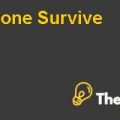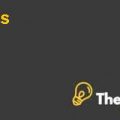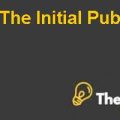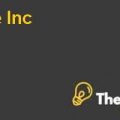
1 INTRODUCTION
Applied Material Inc. was founded in 1967. Applied Material Inc. is a manufacturing company and which provides equipments, facilities and Software to the Global semiconductor, flat panel display, and photovoltaic to related industries. Their customers contain semiconductor, flat panel display and other electronic devices. Applied is the world’s largest semiconductor supplier producer to their organization and leading LCD fabrication equipment to the flat panel display industry. Currently the company operates in US, Taiwan, China, and Korea.
Applied Material was subjected to cyclical conditions for three years 2008, 2009 and 2010 as a result, the conditional change and changing global environment, significant changes occurred in Applied Quarterly new orders and net sales.
2 COMMON SIZE ANALYSIS
Income Statement, Cost of Goods Sold for the year 2010 has decreased from 71% in 2009 to 61% in 2010 that impact positively on gross margin that has also increased from 29% in 2009 to 39% in 2010. Total operating expenses decreased from 36.39% in 2009 to 24.41% in 2010, the positive change during both period impacts positively to its operating income for the year 2010. Applied Material Inc. bears operating losses for the year 2008 and 2009. Total Net income has increased during the period 2009 and 2010 from 6.09% to 9.82%.
Balance Sheet, total current assets increased from 37.21% to 38.20% for the year 2009-10 but the company’s non-current assets decreased from 62.73% to 61.80%. Total Liabilities decreased for the year 2010 from 3.55% to 2.95%. Applied Material Inc.’s stockholders’ equity increased approximately by 1% for the year 2010.
3 RATIO ANALYSIS
Ratio analysis is the key to evaluate position of the company it includes profitability, solvency and liquidity. It helps comparatively to evaluate each sector of the company capabilities towards long term strategies as well as short term operations, it could be your profitability that measures the company efficiency , solvency ratios that helps in paying capabilities of the company to meet their obligations it could be long term and short term capabilities.
3.1 LIQUIDITY RATIOS
3.1.1 ASSET TEST RATIO OR QUICK RATIO
Quick Ratio for the fiscal year 2010 and 2009 are 0.25 and 0.21 respectively. Quick assets are 0.25 times available to meet the amount of current liabilities and in 2009 it is 0.21 times available to meet the amount of current liabilities. Higher the quick ratio response improves the position of the company to meet their current obligations. Applied Material Inc. should create a more effective ratio by making marketing and sales strategies to generate high volume of sales.
3.1.2 CURRENT RATIO
Current ratio for the fiscal year 2010 and 2009 are 0.25 and 0.21 respectively. Higher the Current ratio the better the position of the company to meet their current obligations and if ratio is under 1 then the company will not be able to meet its obligations financially. As we see Applied Material Inc. having Current ratios of 0.25 and 0.21 that is less than one and it is not good for the company to meet their obligations. Applied Material should take serious actions to overcome it.
3.1.3 OPERATING CASH FLOW TO NET INCOME
Operating Cash Flow to Net Income for the fiscal year 2010 and 2009 are 0.25 and 0.21 respectively. This ratio is vital for the company because this ratio reveals the percentage of the company’s total net income that is available cash for the company financing and for the ongoing operations. Declining in the ratio over time suggests that the company has cash flow problems.
3.2 ASSET MANAGEMENT
3.2.1 RECEIVABLE TURNOVER
This ratio is identifies the company’s spreading credit and collecting debts ability. Operating Cash Flow to net Income for the fiscal year 2010 and 2009 are 5 and 3 times respectively. It means that in 2010 the company receives its receivables 5 times of their debts during the year and it is 2 times more than as compare to 2009 that is good for the Applied Material Inc.
3.2.2 Days Required to Collect A/R
The company days required to collect account receivables is 70 and 105 for the year 2010 and 2009 respectively. It indicates the average number of days for a company to collect their payments on services provided and goods that the company sold. Usually figure higher than 40 to 50 days indicate there is receiving problems and major pressure on cash flows.........................
This is just a sample partial case solution. Please place the order on the website to order your own originally done case solution.











